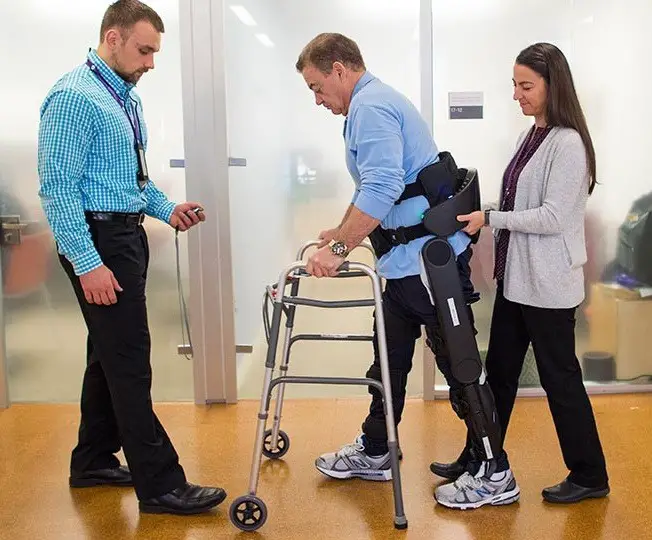If you’ve ever suffered an injury, you know how difficult it can be to adapt to a new way of life while you heal. An injury can impact your ability to do even the simplest tasks, whether it’s a broken bone, muscle strain, or a chronic condition. That’s where occupational therapy comes in.
Occupational therapy is a branch of healthcare that focuses on helping people who have experienced injuries, illnesses, or disabilities regain skills and abilities necessary for day-to-day living. Occupational therapists work to develop customized treatment plans for each individual patient, taking into account their unique needs and abilities. That is why a maritime injury lawyer in New Orleans can be so beneficial in helping you receive the best possible medical care and rehabilitation after an injury, say you might have suffered as a result of a hurricane or property damage.
What is Occupational Therapy?
Occupational therapy can include a wide range of tasks, including grooming, dressing, bathing, and cooking, among many others. Occupational therapists work with patients to learn or re-learn these skills, often using specialized equipment or techniques to help overcome any physical or psychological barriers.
Many people assume that occupational therapy only involves physical rehabilitation, but the truth is that it also includes cognitive, emotional, and behavioral rehabilitation. This means that an occupational therapist can help patients recover from more than just physical injuries.
How Does Occupational Therapy Help with Injury Rehabilitation?
Injury rehabilitation can be a challenging and lengthy process. An occupational therapist can help make the road to recovery easier by developing a customized treatment plan that addresses each patient’s unique needs. This includes:
- Assessment and evaluation: Occupational therapists work with patients to assess their current level of functioning, identifying any areas that may require improvement or support.
- Goal setting: Based on the assessment, the occupational therapist will work with the patient to set achievable goals that are tailored to their specific situation.
- Treatment: The occupational therapist will use various techniques and interventions to help the patient meet their goals. This could include exercises, therapies, and assistive devices.
- Follow-up and evaluation: Regular follow-up appointments are essential to monitor progress and adjust the plan as needed.
Why Is Customized Treatment Important?
No two patients are the same. Each person has their unique needs, abilities, and goals. A customized treatment plan ensures the therapy is tailored to each patient’s needs. This can make the therapy more effective, directly addressing the areas that require support. A customized approach can also help patients stay motivated as they’re more likely to see results.
How to Choose the Right Occupational Therapist for Your Needs
Choosing the right occupational therapist for your needs is essential to ensure you get the best possible care. Here are some things to consider when selecting an occupational therapist:
- Experience: Look for an occupational therapist with experience treating patients with the same condition or injury as yours.
- Qualifications: Ensure the occupational therapist you choose is fully licensed and certified.
- Communication: Ensure the occupational therapist can communicate with you effectively and understand your goals and concerns.
- Access: The location of the occupational therapist’s office should be convenient for you.
The Benefits of Incorporating Occupational Therapy into an Injury Rehabilitation Plan
Incorporating occupational therapy into an injury rehabilitation plan offers numerous benefits, such as:
- Improved functionality: Occupational therapy can help patients regain their ability to perform daily activities, enhancing their overall functionality.
- Pain management: By addressing the root causes of pain and discomfort, patients can reduce their reliance on medication and manage pain more effectively.
- Increased motivation: Customized treatment plans can help patients stay motivated and engaged, leading to faster recovery times.
Everyday Activities Included in an Occupational Therapy Program
An occupational therapy program can include various activities, depending on the patient’s needs. Here are some common activities that might be included:
- Exercises: Occupational therapists can develop exercise programs to help strengthen muscles and improve range of motion.
- Daily Living Skills: Patients may work on tasks such as cooking, cleaning, and dressing to improve their ability to manage daily activities.
- Sensory Integration: Occupational therapists can use sensory integration techniques to help patients manage sensory overload, a common symptom of many injuries and conditions.
Tips for Making the Most of Your Occupational Therapy Sessions
Here are some tips for maximizing the benefits of your occupational therapy sessions:
- Be Open and Honest: Be forthcoming about any pain, discomfort, or frustrations you may have during your sessions. This will help your therapist adjust your treatment plan as needed.
- Stay on Track: Attend all scheduled appointments and complete any recommended exercises or activities outside of therapy.
- Stay Motivated: Set achievable goals and remain committed to the process. Celebrate small successes along the way to stay motivated and engaged.












